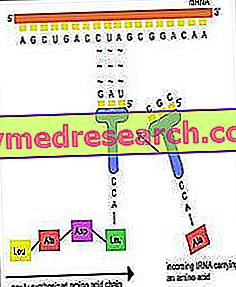Amikacin is an antibiotic belonging to the class of aminoglycosides. It is produced semi-synthetically from another aminoglycoside antibiotic of natural origin, kanamycin A.

Amikacina - Chemical Structure
Usually, amikacin is used to treat infections caused by Mycobacterium tubercolosis, Yersinia tularensis and Pseudomonas aeruginosa which are resistant to other antibiotics.
Amikacin is available in gel for dermal use and in a solution to be administered intravenously or intramuscularly.
Indications
For what it uses
Amikacin is used in the treatment of infections caused by bacteria that are sensitive to it.
In particular, amikacin is used mainly, but not only, in the treatment of Gram-negative infections resistant to other antibiotics.
More in detail, the use of amikacin is indicated in the following cases:
- Bacteremia and septicemia (including neonatal sepsis);
- Complicated and recurrent infections of the genitourinary tract;
- Respiratory tract infections;
- Infections of the central nervous system (including meningitis);
- Osteo-articular infections;
- Infections of the skin and subcutaneous tissue;
- Burns;
- Abdominal infections (including peritonitis);
- Post-operative infections following abdominal surgery.
Warnings
Caution should be used in the administration of amikacin in patients with pre-existing renal dysfunction or pre-existing hearing or vestibular system problems.
Patients treated with amikacin should be kept under close surveillance due to the ototoxicity and nephrotoxicity induced by the amikacin itself.
Before starting the treatment with amikacin and for the duration of the treatment, it is necessary to perform regular audiograms and periodic checks of renal function.
In case of onset of tinnitus (an auditory disorder characterized by the perception of whistling, buzzing, hissing, etc.) or in case of hearing loss, amikacin therapy must be stopped immediately.
The risk of onset of ototoxicity and / or nephrotoxicity, following therapy with amikacin, increases in those patients with pre-existing renal impairment or who are subjected to treatment at high doses and for long periods.
Patients receiving amikacin should be properly hydrated to avoid chemical irritation of the renal tubules.
Amikacin can cause neuromuscular blockade and respiratory paralysis, therefore caution should be used when administering the drug in patients with myasthenia gravis or Parkinson's disease.
Treatment with amikacin, especially if continued for long periods, can favor the onset of superinfections with resistant bacteria or fungi. Such superinfections may require adequate therapy.
A lot of caution should be used in the use of amikacin in newborns and premature babies, as their kidneys are not yet fully developed.
When amikacin is administered parenterally, it may cause adverse reactions that can affect the ability to drive or use machines, so care should be taken.
Interactions
The risk of onset of respiratory paralysis increases when amikacin is administered concomitantly with anesthetic drugs or neuromuscular blockers (such as tubocurarine, succinylcholine, atracurium, etc.).
Concomitant administration of amikacin and other neurotoxic, nephrotoxic and / or ototoxic drugs should be avoided. Among these drugs, we recall:
- Bacitracin, vancomycin, viomycin or colistin, other antibiotic drugs;
- Kanamycin, gentamicin, tobramycin, neomycin, streptomycin or paromomycin, other aminoglycosides;
- Cisplatin or other organo-platinum compounds, antitumor drugs;
- Amphotericin B, an antifungal;
- Cephaloridine and other cephalosporins;
- Powerful diuretics, such as etacrinic acid, furosemide or mannitol .
Concomitant administration of amikacin and bisphosphonates increases the risk of hypocalcaemia (ie a decrease in calcium levels in the bloodstream).
Concomitant use of amikacin and indomethacin (an NSAID) in newborns may increase the plasma concentration of amikacin itself.
In any case, you must inform your doctor if you are taking - or have recently been taken - drugs of any kind, including over-the-counter drugs and herbal and / or homeopathic products.
Side effects
Amikacin can induce various types of side effects, although not all patients experience them. This is due to the different sensitivity that each individual has towards the drug, therefore, it is not said that the adverse effects occur all with the same intensity in each person.
The main adverse effects that can occur during treatment with amikacin are listed below.
Kidney and urinary tract disorders
Amikacin-based therapy can cause:
- Acute renal failure;
- Toxic nephropathy;
- Presence of cells in the urine;
- oliguria;
- Increased blood creatinine levels;
- Presence of red blood cells and / or white blood cells in urine;
- albuminuria;
- Azotemia.
Ear disorders
Treatment with amikacin may cause:
- Hearing loss;
- Tinnitus;
- Balance disorders;
- Deafness, even irreversible.
Nervous system disorders
Amikacin therapy may cause:
- Paralysis;
- Tremors;
- paresthesia;
- Headache.
Superinfections
Treatment with amikacin may favor the development of secondary infections (superinfections) caused by bacteria resistant to amikacin itself or to fungi.
Blood and lymphatic system disorders
The hemolymphopoietic system is that system responsible for the production of cells from the blood.
Amikacin therapy can cause disorders of the aforementioned system by favoring the onset of anemia and eosinophilia (ie an increase in the number of eosinophils in the bloodstream).
Allergic reactions
Amikacin - like any other drug - can trigger hypersensitivity reactions or anaphylactic shock in sensitive individuals.
Lung and respiratory tract disorders
Treatment with amikacin may promote apnea and bronchospasm.
Skin and subcutaneous tissue disorders
Amikacin therapy can cause rashes, itching and hives.
Musculoskeletal disorders
Treatment with amikacin can cause arthralgia and muscle contractions.
Other side effects
Other side effects that may occur during treatment with amikacin are:
- Temperature;
- Nausea or vomiting;
- Blindness;
- Retinal infarction;
- Hypotension;
- Hypomagnesemia, ie the decrease in the amount of magnesium in the bloodstream.
Overdose
Cases of amikacin overdose have only been reported during parenteral administration of the drug.
In case of overdosage with amikacin, neuromuscular blockage may occur accompanied by respiratory arrest which requires immediate treatment.
Peritoneal dialysis or hemodialysis are useful for quickly eliminating excess amikacin from the bloodstream. Circulating amikacin can also be reduced by continuous arteriovenous hemofiltration. In newborns, exchange transfusion may also be useful.
Action mechanism
Amikacin is an aminoglycoside and - as such - exerts its antibiotic action by interfering with bacterial protein synthesis.
Protein synthesis takes place thanks to particular organelles called ribosomes. These organelles consist of ribosomal RNA and proteins associated with each other to form two subunits: the 30S subunit and the 50S subunit.
The task of the ribosome is to translate the messenger RNA coming from the cell nucleus and to synthesize the proteins for which it encodes.
Amikacin - like all aminoglycosides - binds to the 30S ribosomal subunit and, in doing so:
- Prevents messenger RNA from binding to the ribosome;
- It induces a "misreading" of the same messenger RNA, forcing the ribosome to synthesize "wrong" proteins called nonsense proteins.
Some of these nonsense proteins are included in the bacterial cell membrane altering their permeability. Alteration of membrane permeability allows the entry of other antibiotics into the cell, causing a total blockage of protein synthesis.
Mode of Use - Posology
As previously mentioned, amikacin is available as a gel for cutaneous use and as a solution for intramuscular or intravenous administration.
Following are some indications on the doses of drug usually used in therapy.
Gel for cutaneous use
The amikacin-based gel should be applied to the skin once a day, massaging gently.
Solution for intramuscular or intravenous administration
In adults and children over 12 years of age, the dose of amikacin usually administered is 15 mg / kg of body weight per day, to be administered in a single dose or in two divided doses at a distance of twelve hours each 'else.
In children they are one month old up to 12 years of age, the dose of amikacin usually used is 15-20 mg / kg of body weight per day, to be administered in a single dose or in two divided doses at a distance of twelve hours l one from the other.
In infants, the attack dose of amikacin usually administered is 10 mg / kg of body weight, followed by doses of 7.5 mg / kg of body weight to be administered every twelve hours.
In premature babies, the dose of amikacin usually used is 7.5 mg / kg of body weight to be administered every twelve hours.
The duration of treatment is usually 3-7 days for intravenous administration and 7-10 days for intramuscular administration.
In patients with kidney disease the doses of amikacin administered will be lower than those normally used.
Pregnancy and breastfeeding
Amikacin can cross the placenta and may cause fetal harm. Therefore, the use of the drug by pregnant women should be carried out only in cases of real need and only under the strict supervision of the doctor.
Breast-feeding mothers, before taking amikacin, should seek advice from a doctor who will decide if it is appropriate to stop breast-feeding or if it is necessary to avoid the start of therapy with the antibiotic in question.
Contraindications
The use of amikacin is contraindicated in the following cases:
- In patients with known hypersensitivity to amikacin;
- In patients with known hypersensitivity to other aminoglycosides.



